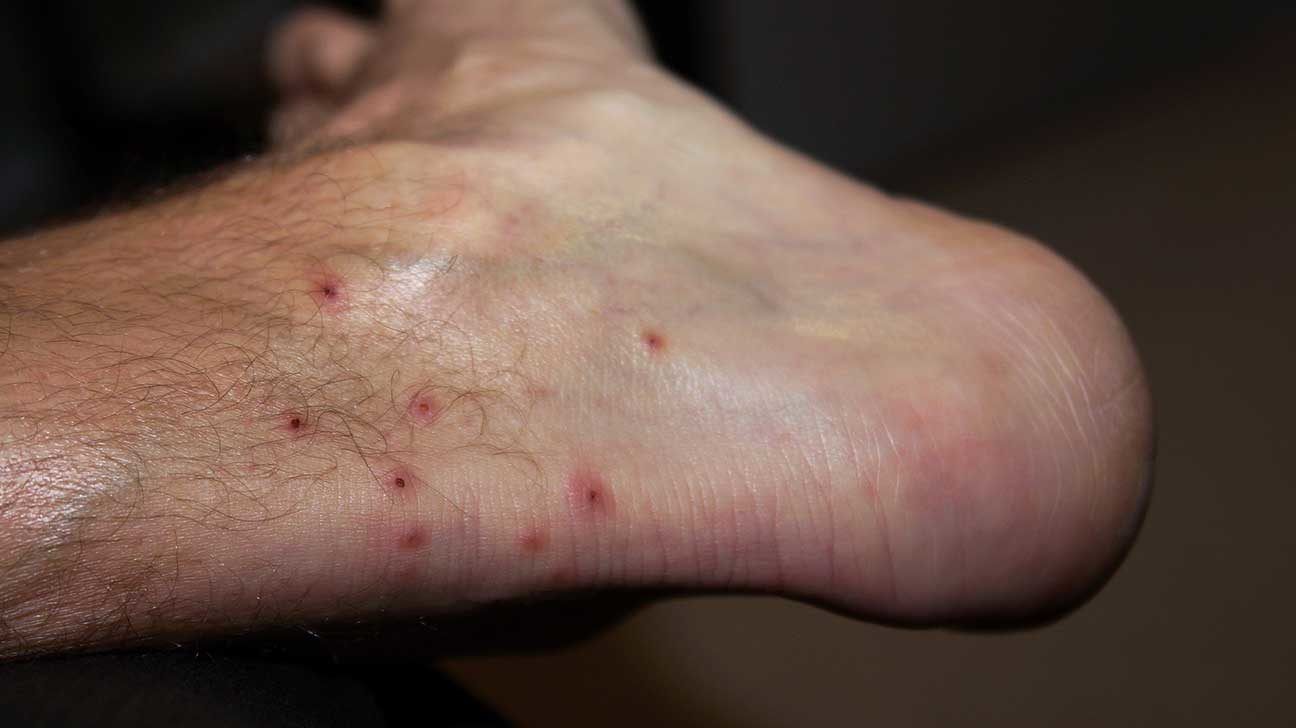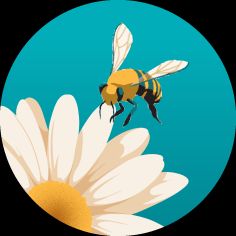Chiggers, also known as red bugs, can bite humans, causing itchiness, inflammation, and skin discoloration. Symptoms typically resolve independently. Several treatments can help reduce irritation.
Read on to learn about chiggers, what their bite looks like, and how to treat the bites.
Chiggers are small mites from the Trombiculid family that inhabit woodland and grassy environments. When they’re in larval form, they can latch onto human skin and cause irritation through their bites. Despite what you may have heard, they do not actually burrow into the skin.
As adults, chiggers are not parasitic. They are only a problem for humans when they’re still in larval form.
Chigger larvae are very small, averaging between 1/120 and 1/150 inches in diameter, according to the American Osteopathic College of Dermatology (ACOD), which makes them hard to see.
They’re most likely to attack exposed skin folds of the body or areas covered with tight clothing that they can penetrate.
These creatures feed on bits of skin, secreting a digestive enzyme, which causes intense itching and irritation. This condition is called
Where do chiggers bite?

Chiggers will usually attach to clothing and migrate their way to the skin. They often show up on the:
- lower legs
- ankles
- behind the knees
- armpits
- waistline
- groin
Bites from chigger mites can cause:
- irritation and itchiness
- skin discoloration
- clusters of small spot-like bumps
You will not feel it when a chigger latches on, and you probably will not feel anything when it bites. However, most people report symptoms within hours of the bite.
The most problematic symptom of chigger bites is the intense itching and formation of bumps that may look like welts, blisters, pimples, or hives.
Chigger bites are most common in places where clothing fits tightly. Most chigger bites occur around the ankles, waist, armpits, crotch, or behind the knees.
Complications
Disease transmission via chigger bites is an understudied area. However, chigger bites
The transmission of other diseases is possible, but evidence in this area is lacking.
Chigger bites are largely seasonal in the Northern Hemisphere. The larval mites mature between June and September, making trombiculiasis most common in the summer and fall. In more tropical regions around the world, chigger mites feed year-round.
Common areas where you may be subject to chigger bites include overgrown grassy areas, forests, or moist ground near bodies of water.
Chigger bites can be distinguished from other common arthropod bites in certain ways.
Bed bug bites tend to occur in a clustered or zigzag formation in raised red bumps, while chigger bites are more grouped around areas where tight clothing meets the skin and may show up as either flat or raised.
Flea bites and chigger bites occur in similar patterns and may resemble each other. The main difference is that chigger bites tend to be hard and scabby in the center.
Mosquito bites tend to be larger bumps that show up individually rather than in clusters.
The following remedies may help reduce inflammation and itching.
- cold compresses
- over-the-counter anti-itch medications such as hydrocortisone cream or calamine lotion
- oral antihistamines
In more complicated situations, a professional may prescribe:
- corticosteroid injections if severe inflammation develops, though
this is rare - doxycycline if the bites have led to scrub typhus
It can take up to 2 weeks for chigger bites to heal.
If you suspect you have chigger bites, immediately wash your skin with soap and water and clean any clothes you wear. This will get rid of any remaining chiggers on your body.
In the meantime, try to avoid scratching the area, as further breaks to the skin barrier can increase the risk of further infection. Apply an antiseptic to any welts.
Chiggers are often too small to be visible in grassland or woodland environments. As a result, preventive measures are typically general ones.
Avoid common chigger habitats
Spring, summer, and fall are prime times for chigger bites. When you’re in wooded areas that may be chigger-infested, try not to brush up against vegetation. When hiking, walk in the center of the trails rather than along the sides.
Chiggers live in tall weeds and grass, berry patches, and wooded areas. They may be in your backyard, by the lake, and clustered along your favorite hiking trail. They are most active in spring, summer, and fall afternoons when temperatures are warm.
Clothing
Wear long sleeves and long pants that can be tucked into your socks or shoes. Use insect or tick repellent, especially around the tops of your shoes, shirt neck, cuffs, and waistband. Shower as soon as you go indoors. Wash your clothes in hot water.
It’s important to see a doctor if your chigger bites do not subside in 2 weeks, if inflammation increases, or if you experience any symptoms of scrub typhus, such as:
- dark scab-like region at the site of the bite
- fever
- chills
- headache
- body aches and muscle pain
- mental confusion
- enlarged lymph nodes
- rash
Chigger bites can cause itchy, inflamed bumps on the skin. These larval mites are common in grassy and woodland environments and are often too small for you to notice them.
Symptoms of chigger bites typically resolve independently. Antihistamines, cold compresses, and anti-itch lotions can help manage symptoms.
If your symptoms do not resolve within 2 weeks, it’s recommended that you schedule an appointment with a healthcare professional.

